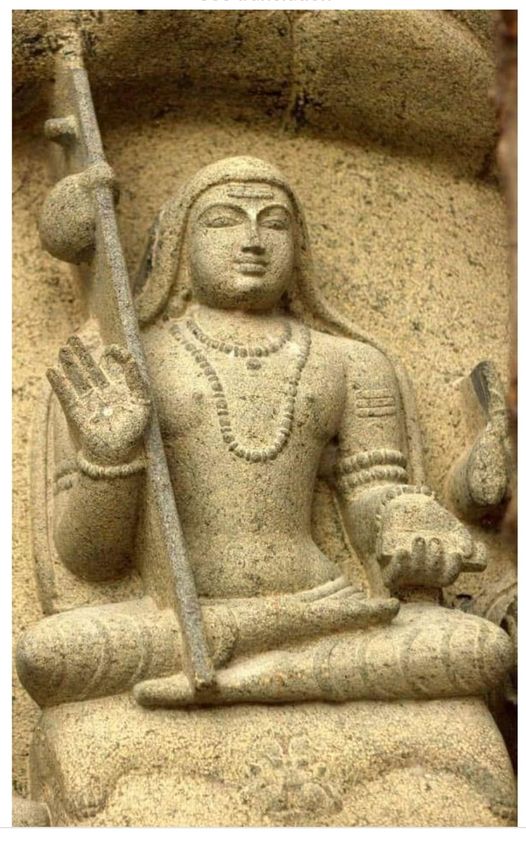Sri Sankara Bhagavatpada had darshan of His Preceptor Sri Govinda Bhagavatpada at a place (cave) on the banks of the Narmada river.
Later, as per the wishes of Sri Govinda Bhagavatpada, Sri Sankaracharya crossed the forests of Central India and in due course reached the sacred mokshapuri of Varanasi where he stayed on for a pretty long time.
His illustrious commentaries on the Brahma-Sutras, the Upanisads, the BhagavadGita, the Vishnu – Sahasranama, the composition of the smaller pieces such as the Gangashtaka, the Manisha panchaka etc., are assigned to the period of His Stay at Kashi.
A verse in the Guruvamsa Kavya, remarks on the manuscript of this Kavya in the Annual report of the Mysore Archaeological Department for the year 1928 (Govt. Press, Bangalore) and an inscription in the Brahmendra Matha at Sivalaya Ghat in Varanasi clearly indicate Sri Sankara Bhagavatpada’s establishing religious institutions in the form of Mathas at important places which He visited or wherein He stayed for long.
The Guruvamsakavya speaks of the Acharya’s founding of *five mathas* at Varanasi, four for His principal disciples and one for Himself.
” वाराणसीं योगिवरोऽधिगम्य भुजैरिव श्रीहरिरेष शिष्यैः ।
सहात्मना पञ्चमठानमीषां प्रकल्प्य तस्थौ कतिचिद्दिनानि “II
-(Verse 23-Canto III).
On pages 15 to 20 of the Annual Report of the Mysore Archaeological Department mentioned above, the following remarks on the Guruvamsakavya are found:-
” It follows that the author was the contemporary of Somasekhara II (1714-1739) of Keladi when Sacchidananda Bharati (1705-1741) adorned the pontifical seat at Sringeri.
(Kashi) Lakshmana Sastri, the author, seems to have been a very good scholar and as he composed the work under the orders of Sachchidananda Bharati. It may be reasonably presumed that he faithfully copied all available traditional information about the successive teachers of Sringeri “.
On page 16 of this Report the founding of an important Matha at Varanasi by Sri Sankaracharya is noted-
” The author says that He (Sri Sankaracharya) set up five Mathas and mentions the names of Sringeri, Kanchi, Badri, Kashi and Jagannatha.”
The following inscription in the Brahmendra Matha in Varanasi (referred to earlier) points to a line of Acharyas belonging to Sri Sankara Bhagavatpada Parampara:—
” जगद्गुरो शंकरस्य पारम्पर्यक्रमागतः ।
शिष्यः सन्मार्गनिष्णातः चन्द्रशेखर नामकः ।
तस्य शिष्यो विश्वनाथयतीन्द्रो योगिनां वरः ।…”
(1/2)









